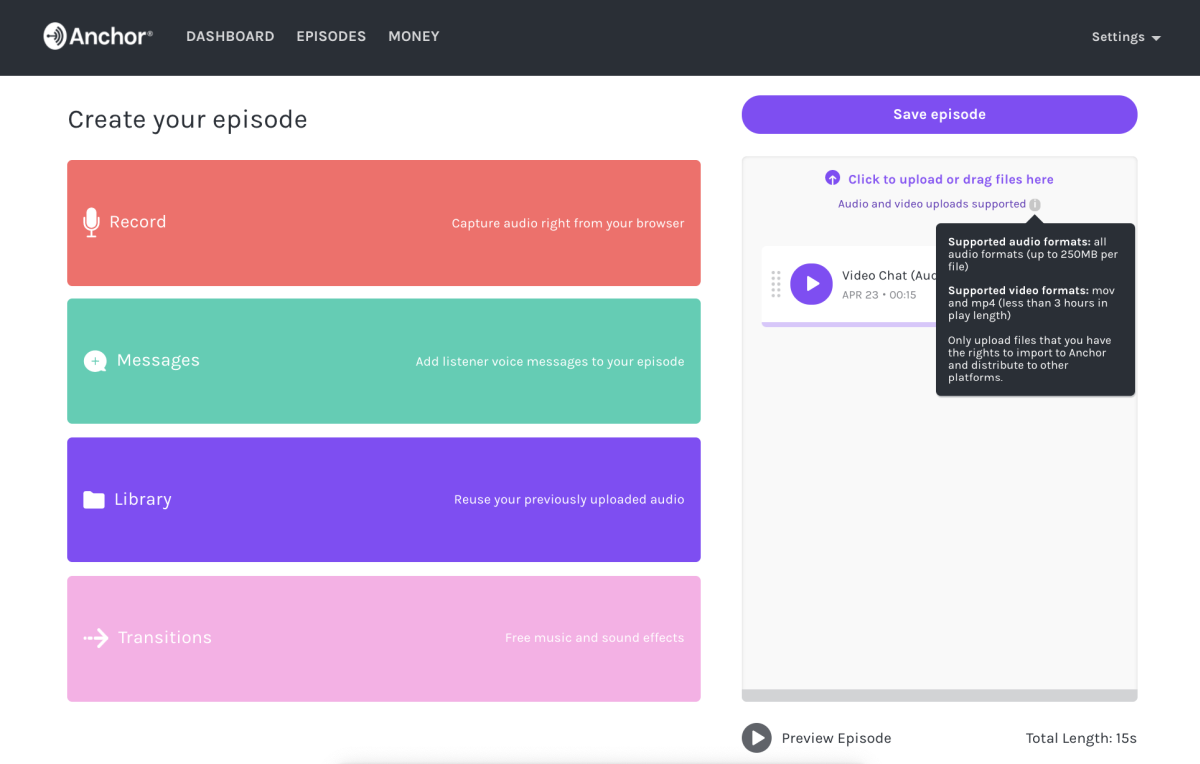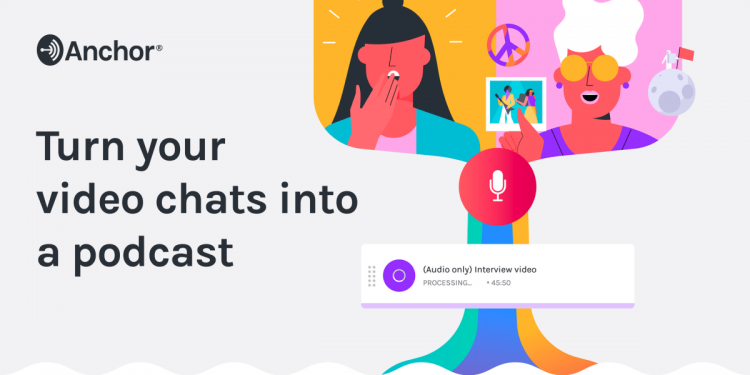The COVID-19 pandemic has certainly affected the global economy, with preventive measures like lockdowns and social distancing protocols put in place to curb the spread of the coronavirus. Podcasting, for that matter, is no exception here; listeners have reportedly fallen by up to 20%, and the disruptive nature of the pandemic has also affected how podcasts are now recorded.
Part of the appeal of podcasts is that hosts and guests usually appear to engage in an honest, candid conversation. Face-to-face interaction plays a big part in that, and with the current situation, producers have had to find alternative ways of recording podcasts.
Anchor, the podcast creation/distribution platform acquired by Spotify in 2019, has announced a new tool that lets users turn their video calls into podcasts. Basically, the tool allows you to upload recorded video calls onto the Anchor platform, which then pulls the audio from the video file.
Once uploaded, users will be able to utilise Anchor’s built-in editing tools—background music, effects, trimming, etc—to prepare the podcast. Once the episode is ready, the podcast can be distributed to any one of the supported platforms: Spotify, Apple Podcasts, Google Podcasts, and so on.
How to record a video call
Recording video calls can be a fairly simple process, depending on your choice of video conferencing app. For example, for iOS devices, you can simply pull down the Control Center and turn on screen recording. Be sure to hold down on the circular record button for more recording settings, and to enable the microphone.
Some other apps, such as Google Meet, offer users a built-in ability to record their video calls. Anchor included a number of official links for various video conferencing tools, including:
Many producers also simultaneously record videos of podcast sessions so that the video file can be uploaded onto YouTube. While there isn’t the ability to convert YouTube links to audio-only podcasts, you can still upload the raw video file onto the platform to be converted.

All in all, the tool isn’t exactly the most groundbreaking of technologies to emerge in recent times. The service basically separates the audio track from the video track, which is something that you can do with most, if not all video editing software. The integrated nature of the feature, however, means that there is now one less step for podcast producers in the entire process.
The new feature is now available on Anchor’s web platform for all users. To find out more, click here. Meanwhile, you can also check out SoyaCincau’s podcast, Let’s Talk About, where we talk about all things tech (and more)—available in podcast format and on YouTube.








